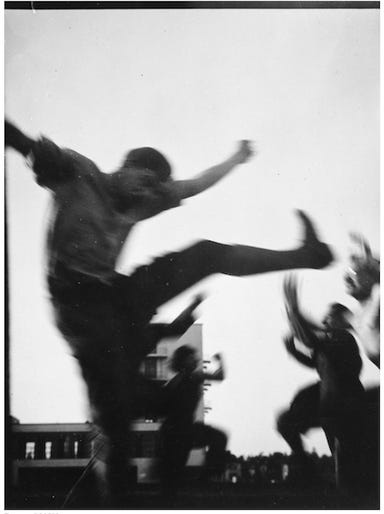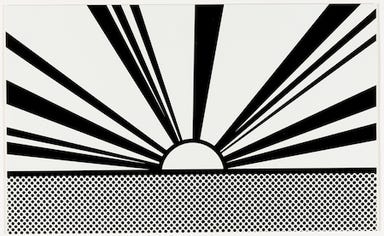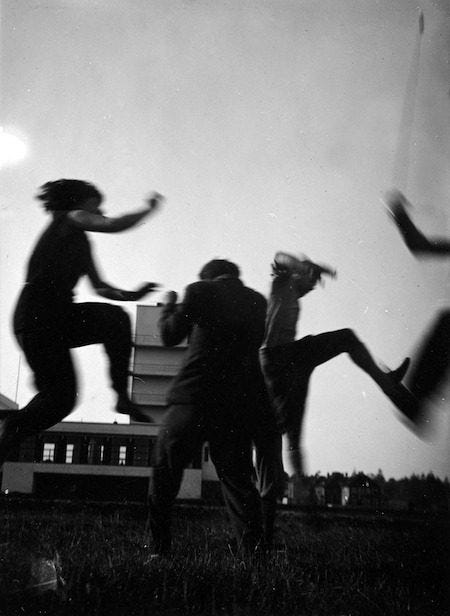Savoring Instinct.
Re-wilding summer….
Summer is a time to connect with instinct—both with our deepest human nature and in the wider earth-body sense of nature, too. Just now, at the season’s midway point here in the Catskills, the peaches are ripe and juicy. The green growth and leafy expansion outside seems endless. And the damp night is full of fireflies.
This summer, in particular, I’ve been diving into Jungian thought, something I’ve circled around since I was in college. Jung determined decades ago that our disconnection from instinct is implicated in all contemporary world problems, contributing to an overall sense of lost vitality.
He defined the five fundamental involuntary human instincts as: Movement, Sexuality, Hunger (for learning, affection or food, etc.), Self-Reflection, including all spiritual seeking, and Creativity, a desire to bring new things into being.
Summer’s gift is that all of these areas are up for exploration, each in a way that can be deliciously nourishing. And there’s still plenty of summer left. Get it!
{image: "Cape Light, Peaches, Provincetown," 1983, by Joel Meyerowitz.}
Meet with me…
My Fall roster is ready. If you’re curious about investigating new horizons with me, let’s schedule a free 45-minute call to delve deeper. And, of course, if you know someone who could benefit from my work, your recommendations are hugely welcome. Nearly every client has come through a word-of-mouth. It’s been incredible.
(NYC—I”m considering offering in-person meetings, either up here or down in the city. If you feel like face-to-face would suit you best, let’s discuss!)
5 Ways to Honor Instinct
Some ideas…but you’ll know best when exploring this summery awakening of your instinctual drive through sensual, embodied experience.
[image: "Wild man and Wild Woman," Germany, 1545.]
1. Hunger
Get hungry, then slow yourself way, way down to savor something local & freshly harvested with zero distraction—for me, this would be a peach. Attune your whole body and all your senses to the experience of eating this perfectly ripe masterpiece. Lean into every moment. Let yourself feel the hunger and its satisfaction. What is the sensation of each bite? What would it be like if this was your last time? What would it be like if this was your first time? What is transitioning out of that fruit/veg body into yours? How long can you sustain the aura of satisfaction, letting it reverberate without words?
[image: Detail from “The Feast of Sada,” Iran, circa 1525.]
2. Movement
Let it be harder than you knew you could do, pushing the edge and looking for evidence of moments when the difficulty feels liberating. Feel any other emotions as they rise, but is there pleasure, too? I love long repeatative patterns like those in kundalini or The Class to access this space. Otherwise, is there a dance move that you love to do? A way you prefer to sit? Which movements are uniquely yours? What is a movement, rhythm or gesture you’ve loved since childhood? Do you!
[image: “Eurythmy,” T. Lux Feininger, 1927.]
3. Sexuality
I’m curious about the edge between sensuality and sexuality. Is the sun shining on your face erotic? How does it change your experience to put on body oil after a shower very, very slowly? What’s it like to feel desire as you reach for your morning coffee, lingering and luxuriating in the sensation? Just resting your fingertips on the cup before bringing it to your lips. Holding the tension, what words describe that feeling of desire?
[Image: “Vasterival Beach, Normandy,” Bill Brandt, 1954,]
4. Self-Reflection
I like entering the mystery of symbols without involving the intellectual mind much right now. Which symbol intrigues you most? What’s the sensation you feel in its presence? Where is that feeling in your body? Try bringing the felt sense of the image into your meditation. If the symbol were a sound, could you sing it? If the symbol had a color, what would it be? Can you let your cells drink in that color tone? How would you rename that symbol in your own language?
[Image: “Landscape 4 from Ten Landscapes,” Roy Lichtenstein, 1967.]
5. Creativity
Ha. I could say a lot right here. But for now I’m most curious about how creativity comes through even when I’m are not ‘being creative.’ Like, how does it happen anyway, or how could you let it happen anyway? One client described this as painting with soap bubbles in the sink. Can the way I walk down the stairs be a creative exploration, but without a lot of *should* energy or intellectual framing? Could the way I take my next breath be creatively expressed without thinking or planning? Can you draw with a favorite material across the page without prioritizing the eyes, but moving the pencil/chalk/paint in a way that feels good to your fingertips, hand, arm and body? The eyes just witness what the hand desires. Then do it with your non-dominant hand.
Kind Words…
Reflections from a client, a brilliant actor and playwright in LA who recently wrapped her 3-month session with me. Coming into our work, “I knew I was going to have to face certain comfortable patterns which had held me in a state of paralysis,” she shared. “I knew whatever change was going to occur would come from within me and that meant telling the truth about some things. It also, as it turns out, meant finding really beautiful parts of myself which had been whispering for my affection for a long time.”
During our time collaborating together she “found a true reference for what being in alignment with myself feels like, and am now working with that as the baseline from which I conduct my life.”
[image: “Eurythmy,” T. Lux Feininger, 1927.]
Copyright (C) *|2023|* *|Thunderbolt Guild|*. All rights reserved.













